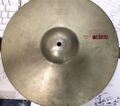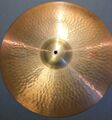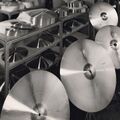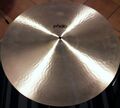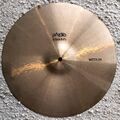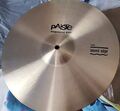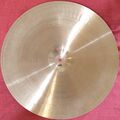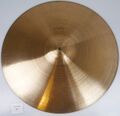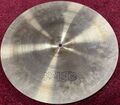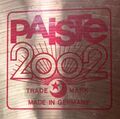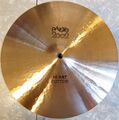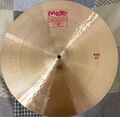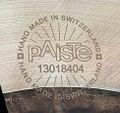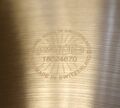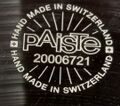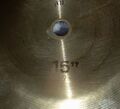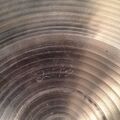Difference between revisions of "Paiste Serial Numbers"
| Line 234: | Line 234: | ||
File:2003_Signature_Serial.png|2003 Signature | File:2003_Signature_Serial.png|2003 Signature | ||
File:2004_2002_Serial.jpg|2004 2002 | File:2004_2002_Serial.jpg|2004 2002 | ||
| + | File:2004 Dark Energy Serial.jpg|2004 Dark Energy | ||
File:2008_Signature_Serial.jpg|2008 Signature | File:2008_Signature_Serial.jpg|2008 Signature | ||
File:2009_Dark_Energy_Serial.jpg|2009 Dark Energy | File:2009_Dark_Energy_Serial.jpg|2009 Dark Energy | ||
| Line 250: | Line 251: | ||
<gallery> | <gallery> | ||
File:2012_Giant Beat_Serial.jpg|2012 Giant Beat | File:2012_Giant Beat_Serial.jpg|2012 Giant Beat | ||
| + | File:2012 Twenty Custom Serial.jpg|2012 Twenty Custom Serial | ||
File:2013 2002 Serial.jpg|2013 2002 | File:2013 2002 Serial.jpg|2013 2002 | ||
File:2013 Signature Serial.jpg|2013 Signature | File:2013 Signature Serial.jpg|2013 Signature | ||
Revision as of 10:30, 27 February 2023
Contents
- 1 ? - 1971 preserial and transition models
- 2 1972 - 1981: the Black label era
- 3 **German serial numbers**
- 4 1981 - 1986
- 5 1986 - 1989/90
- 6 1989/90 - 1995
- 7 1995 - 2011
- 8 2011 - present
- 9 Early 70's 602 engraving dates
- 10 Variations of the patent stamp on Sound Edge Hi-Hats, Flat rides
- 11 Early high "ripple count" sound edge bottoms
Paiste serial numbers were first applied during 1972.
Prior to this there was no exact means of determining the age of a Paiste cymbal, there were more general indicators that would get you in the ball park age wise: the years of production for the series or model, lack of or presence of ink stamping, different version of the logo stamp, alloy used or even the size of the bell or mounting hole.
These cymbals are referred to as "Pre-Serial" cymbals.
- Important note: cymbals have been found without serial numbers stamped on them from production eras where we might expect them.
- This guide does not apply to serial numbers on many prototypes, nor the German made Paistes which seem to have been numbered from 1xxxxx up (see German serial number section below).
? - 1971 preserial and transition models
There is a Wiki section that helps determine the age of Formula 602's based on the stamp/emboss format: Preserial Era stamps
General rules to follow in determining the age of your Paistes:
- ? - early 60's?: Stambuls had the size and weight printed in red ink higher than 3:00 on the cymbal, closer to 2:30, (see example below), we don't have any examples of early 602's being stamped this way.
- ? - early 60's?: Red "size" in inches followed by the "type/weight" ink stamp at 3 o'clock (for 602's). Some German Paistes have the size stamped in centimeters.
- 1963 - 1981: Red "type/weight" ink stamp at 3 o'clock on standard weight models: Paper Thin, Thin, Thin Crash, Medium, Medium Ride, Heavy, Concert (excluding 2002's, giant beats and Sound Creations).
- 1971: "Paiste" name ink stamp now gets applied above the bell (probably with introduction of 2002 line which comes in late spring) on all Paiste lines and Ludwig cymbals (Standard and Stanople, Ludwig cymbals never get a series name stamp).
- 1972: Giant beats get the "Paiste" name ink stamp on the "black label" cymbals, they are never given a Paiste outline logo ink stamp on the bottom of the cymbal.
- 1972: Serial numbers (on Swiss cymbals), series name ink stamp and Paiste outline logo ink stamp on bottom introduced, "True" Black Label era stamping begins.
- Mid 60's - 1973: Red ink diameter/size stamp under the bell until 1973 (or very late '72) and then it changes to Black for the reminder of Black Label phase (1973-1981).
- 1975: (or very late in 1974), the "Type/weight" stamp ink changes to Black for specialty type 602s only: seven sound set cymbals, Chinas, Flat Rides (Joe Morello cymbals now get the black signature stamp instead of the red stamps).
Transition models:
- Some early (1972) 602's had serial numbers but didn't have the series name stamped below the name "Paiste" (vintage 602 SE Hats always had the black diameter stamp under the bell and the SE logo stamps on top were always black.)
Preserial 2002's:
- Very early production 2002's (1971) didn't have the series name stamped below the name Paiste, some didn't have the "Paiste" outline stamp on the underside of the cymbal either.
- The very 1st. cymbals off the production line had a "border" around the the 2002 stamp/emboss, we call this the "box stamp". We understand the box stamp emboss is the rarest of the rare when it comes to preserial 2002's. Our research has found that this emboss was difficult to apply and was quickly dropped in favor of the classic "open stamp" 2002 emboss we see throughout the 1970's into 1980 and early '81.
1972 - 1981: the Black label era
Starting in 1972 there were six digit serial numbers stamped on each cymbal coming out of the Swiss plant:
- The specific year is identified by the 'first' digit in the serial number. Some believe a leading 1 means 1971 (it does not), we haven't found one yet having checked thousands.
- All 6 digit serials with a leading 1 check out as 1981 for Swiss made cymbals. The German versions from the 70's do start with a 1, but that isn't the year (see explanation below).
- The 1970's serial numbers did not include the series name (602, 2002, Sound Creation, etc.) above the serial number.
- Paiste Nottwil put serial numbers on the lower lines in 1972 and 1973 (Stambul, Stambul 65, Dixie and possibly the Super) up to about serial# 414xxx - probably after or in Jan/Feb 74. They then choose only to put serial numbers on the professional lines (Formula 602, 2002, Giant beat and later Sound Creation) for the rest of the Black Label era.
- Swiss 404's and 505's didn't get serial #'s until mid '81 when they transitioned to colored logos.
As a general rule for any Paiste line made in Switzerland: 6 digit numbers no series name above it, '72-early '81 production, first digit indicating year.
2xxxxx 1972
3xxxxx 1973
4xxxxx 1974
5xxxxx 1975
6xxxxx 1976
7xxxxx 1977
8xxxxx 1978
9xxxxx 1979
0xxxxx 1980
1xxxxx early 1981
**German serial numbers**
German-made 2002's started receiving serial numbers from very late 1973 onwards (a few earlier 2002 examples exist).
Some collectors are sure they have 1971 production 2002 cymbals with serial numbers starting with 1xxxxx, they are in fact German made 2002's with a different serial numbering format.
The German numbering system differs from the Swiss system in that that cymbals were numbered consecutively; the first digit does not equal the year!
If you are looking at a German Black Label 2002 from the 1970s, the second digit is a good general indicator of the year (this also applies to all post '74 lower line German produced cymbals except the 101).
- 1972-74 the German factory not only made 2002s for the German market, they also helped the Swiss factory with exports of 2002s due to high demand.
- The German plant traditionally made all of the "lower line cymbals" up to the present, it is understood that the Stambul, Dixie and the Super got serial numbers from '75 and later.
- German Stambul 65's never got serials because they were discontinued by late '73 or early '74 (before serial numbers were applied).
- German 404's and 505's got serials from the start of production in late '77.
- Right before Paiste went to the printed color logos (1981) it looks like production increased substantially and they started going through serials at a faster rate so the "2nd digit = year" rule no longer applies!
- Judging from the serial numbers, the German plant stopped producing 2002's in 1986 when the 3000 was introduced.
Here's a breakdown (dates are approximate):
late 1973-1979 serial numbers : 13xxxx to 19xxxx
- 17xxxx is from around '77 or '78, a lower third digit (171xxx-174xxx) likely from '77 while a higher third digit (175xxx-179xxx) puts you around '78, serial# 196181 is from about '79.
1980 serial numbers: 20xxxx - 21xxxx
1981-1986 serial numbers: 22xxxx-3xxxxx
- All 2oo2s with serial# 22xxxx and later are red labeled.
- Confirmed specific dates from the German factory: serial# 2612xx produced in November '83, serial# 2984xx produced in October '84, serial# 3244xx produced in August '85.
1986-1990 serial numbers: 33xxxx-6xxxxx
- example: #333994 '86, #418074 '87 or '88.
1981 - 1986
Starting in 1981, "PAISTE" was stamped above the serial number, often along with the series name. (NOTE: This change occurred sometime during the year, some examples of the previous style exist with 1981 serial numbers.)
- Like before, the first number indicates year - the following would be an example of 1982:
- 6 digits with plain PAISTE stamp:
1xxxxx remainder of 1981 (some early Color printed Logo '81 cymbals just have PAISTE above the number and not series name)
2xxxxx 1982
3xxxxx 1983
4xxxxx 1984
5xxxxx 1985
6xxxxx early 1986
- During this time (mid/late '81) Paiste changed label colors on some of their series. Formula 602 - Blue, 2002 - Red, 505 - Green, among others.
- The RUDE and Colorsound 5 names were NOT stamped after PAISTE.
1986 - 1989/90
During 1986 (probably when they launched all the new lines - 3000, 2000, 1000, etc.), "PAISTE" was stamped above the serial number, without series name.
- Like before, the first number indicates year - the following would be an example of 1989:
1989/90 - 1995
During late '89 or ealy '90 the company name was changed to the 'high/low' style" "pAisTe".
- Therefore "pAisTe 345678" would be from 1993.
1995 - 2011
Sometime in 1995 Paiste started using eight digit serial numbers. In these cases, the first two digits represent the year of production.
- Therefore "96789012" would be from 1996.
- 1995 Signature Serial.jpg
1995 Signature
- 1999 Signature Serial.jpg
1999 Signature
- 2003 Signature Serial.png
2003 Signature
- 2004 Dark Energy Serial.jpg
2004 Dark Energy
- Starting in about 2005, "MADE IN SWITZERLAND" was added to the bottom logo of the 2002 cymbals.
2011 - present
In the second half of 2011, Paiste started using a laser etched serial number on the cymbal's bottom side.
- Numbers are not stamped on the top side from this point on. The first two numbers are still the year produced.
- 2012 Giant Beat Serial.jpg
2012 Giant Beat
- 2015 RUDE Serial.jpg
2015 RUDE
- 2017 Giant Beat Serial.jpg
2017 Giant Beat
- 2018 Signature Reflector Serial.jpg
2018 Signature Reflector
- 2021 Signature.jpg
2021 Signature
- 2022 2002 Serial.jpg
2022 2002
Early 70's 602 engraving dates
We know from two different sources at Paiste (one was Erik Paiste) that these may represent cymbals which were returned to have some rework done on them.
They most likely date the modification and not the actual cymbal manufacture date. Currently we have records for two dozen of these 602s:
- 1-72: 3 (one with R - 1 - 72 but in the same style)
- 2-72: 2
- 3-72: 5 (one pair of 15" SE hats with outline stamp and the older style patent list)
- 4-72: 6
- 5-72: none so far
- 6-72: 3
- 2-73: 3 (pair of 1972 serial number hats plus a preserial 20" Ride)**
- 3-73: 1 (14" SE hat bottom preserial) This preserial tells us that the time lag before a cymbal is returned for rework might be a year or two.
- And last but not least there is one Giant Beat which has 7 or 9 - 72
(**)The above pair of hi-hats is a rework from Paiste: The engraving is "2-73" and the serial numbers are 226602 and 226603, the hats were 12 3/4" diameter and this is what Paiste customer services had to say: “this hi-hat indeed is from 1972, In former times hi-hat pairs were matched and the serial number was embossed afterwards. The engraving inside the bell “2-73” means, that something was changed or repaired on customer’s request in February 1973 by our craftsmen. The 12 ¾” size is indeed remarkable. It is possible, that the customer damaged the edge, and our craftsmen trimmed the edge at the factory in February 1973 with the result being a smaller sized hi-hat.”
Variations of the patent stamp on Sound Edge Hi-Hats, Flat rides
Through the early years of sound edge hi hats, the number of patents by country increased for zero to six:
- "Pat. Pending" only from 1967 until at least July 1969 (after that the ink changes to show the US patent.)
- Patent numbers from 4 countries on stamp (Swiss, Great Britain, Italy, USA) ~1970 (possibly as early as July 1969 but no sooner due to the inclusion of US patent number)
- Patent numbers from 6 countries on stamp (adds Germany and USSR) ~1972 (It is possible it could date as far back as 4/1970 as that's when the German patent number was granted.)
- Removal of "other countries pending" by 1976 at the latest.
- There is the possibility that the earliest 602 SE Hats were stamped with a simple Sound Edge Top (and Bottom) in a plain font in red ink at 3:00 O'Clock (like all other 602s) before they came up with the black wavy SE Logo stamp.
- We have an old advert with this alternate stamping, we were told by Ed Clift that this plain text stamping was just done for the ad and that all production SE Hats had the wavy black logo, but it wouldn't be surprising if some were sold with the plain red ink.
Patent lists and Pat Pending years:
The timeline on the Paiste site says 1967/68 for flat rides and sound edge hats. The details on the U.S. patent & trade mark office site says:
- Paiste Flat Ride: United States Patent 3,546,994 Filed Jan 22, 1969 and Issue Date: December 15, 1970
- Paiste Sound Edge Hats: United States Patent 3,453,923 Filed Aug 3, 1967 and Issue Date: July 8, 1969
- Given Paiste themselves say "invented 1967/1968", they were likely patented in Switzerland and England earlier than USA.
Early high "ripple count" sound edge bottoms
Another identifying factor of early preserial 602 sound edge bottoms is they had a higher "ripple count" than later versions, it seems Paiste had not decided on a standard number when sound edges were first introduced.
- There are even numbers of ripples. They started out at 56 or 54 in the "Pat Pending" era (mid 1967 - mid 1969), reduced to 52 once production settled down, reduced to around 36-42 by 1972 (serial number black label era), and 32 by the blue label era and into the present day reissues (needs to be verified).
- There are cymbals with other ripple numbers (46 x 1, 38 x 1) which might represent the handmade factor, or be intermediate forms in time. We don't have enough examples to get that precise.
Sound Edge ripple reductions (scallops) tabulation as at 10-Oct-21
56 14" preserial x 3
54 15" pat pending; 15" black
52 14" preserial x 7
51 15" with 51 reputed (probably miscount by 1)
50 15" preserial; 14" preserial
46 14" preserial
42 14" black label; 14" preserial, 1972 13"
38 14" black label
36 14" black label x 3
32 14" blue label; 14" present day
Information from: Sean Walton, Todd Little, Steve Black, Dan Garza, Nils Lillig, Splash Baker.
Return to the Main Page
Return to the Paiste Series Portal
Return to the Paiste Cymbal Type Portal

